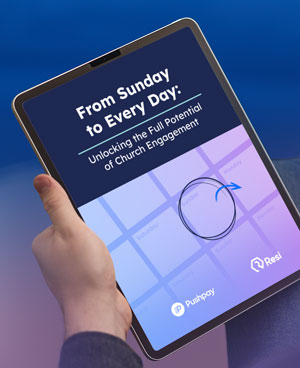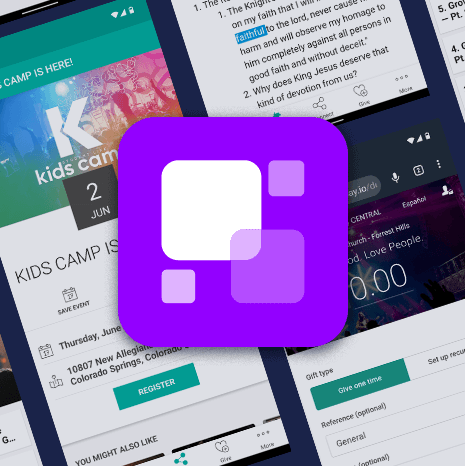Strategies for Promoting the Program Within Your Church Community:
- Announcements: Regularly share updates and invitations during church services and events.
- Testimonies: Highlight stories from current or past group members to illustrate the program’s impact.
- Bulletin and Newsletters: Include information about the program in church bulletins and newsletters.
Using Digital Tools and Platforms for Promotion:
- Social Media: Utilize platforms like Facebook, Instagram, and Twitter to share engaging content and updates.
- Church Website: Dedicate a section of your church website to the discipleship program, including details and sign-up options.
- Email Campaigns: Send targeted emails to your congregation with information, testimonials, and registration links.
- Online Communities: Leverage online groups or forums where church members can discuss and promote the program.
Best Practices for Sustaining Discipleship Groups
Regular Check-ins and Support
The ongoing success of your discipleship groups relies heavily on the support and encouragement provided to group leaders.
Importance of Ongoing Support for Group Leaders:
- Consistency: Regular check-ins help maintain consistency and address any challenges leaders might face.
- Encouragement: Continuous support and encouragement can prevent burnout and keep leaders motivated.
- Accountability: Regular interactions provide accountability and ensure leaders are following the program’s guidelines and objectives.
Methods for Providing Support and Encouragement:
- Monthly Meetings: Host monthly meetings where leaders can share experiences, discuss challenges, and learn from one another.
- Mentorship Programs: Pair new leaders with experienced mentors who can offer guidance and support.
- Resource Sharing: Regularly provide leaders with new study materials, discussion guides, and other resources to keep their groups engaged.
- Personal Check-ins: Schedule one-on-one check-ins with leaders to offer personalized support and address specific concerns.
Celebrate Successes
Recognizing and celebrating successes within your discipleship groups fosters a positive atmosphere and encourages continued participation.
Share Testimonials and Stories to Inspire Others:
- Personal Testimonies: Encourage members to share their personal stories and experiences with the wider church community.
- Video Highlights: Create short videos featuring testimonials and highlights from group activities to share on social media and during services.
- Written Stories: Include written testimonials and stories in church bulletins, newsletters, or on the church website.
By implementing these best practices, you can ensure the long-term success and sustainability of your discipleship groups, creating a thriving environment for spiritual growth and community building within your church.
Frequently Asked Questions (FAQs)
What is the ideal size for a discipleship group?
The ideal size for a discipleship group is typically between 5 to 12 members. This size allows for meaningful interactions, personal sharing, and accountability while ensuring that everyone has the opportunity to participate and be heard. Groups that are too large can become unwieldy and less intimate, whereas groups that are too small may lack diverse perspectives and sufficient support.
How often should discipleship groups meet?
Discipleship groups should meet regularly, with weekly or bi-weekly meetings being the most effective. Consistent gatherings help build a routine, foster deeper relationships, and ensure steady progress in spiritual growth. The frequency of meetings can be adjusted based on the needs and schedules of the group members, but maintaining a regular rhythm is crucial for sustained engagement and growth.
What materials do we need to start a discipleship group?
To start a discipleship group, you’ll need several key materials:
- Bible: A reliable translation that all members can easily read and understand.
- Curriculum: A structured study guide or curriculum that aligns with your church’s theology and the group’s objectives. Examples include “Discipleship Essentials” by Greg Ogden or “Rooted” by Mariners Church.
- Discussion Guides: Questions and topics to facilitate discussion and ensure focused, meaningful conversations.
- Journals and Notebooks: For members to take notes, reflect on discussions, and record their spiritual growth.
- Additional Resources: Books, articles, or multimedia resources that complement the main curriculum and provide further insights.
How do we measure the success of our discipleship program?
Measuring the success of your discipleship program involves both quantitative and qualitative assessments:
- Attendance and Participation: Track attendance rates and participation levels to ensure members are engaged and committed.
- Spiritual Growth: Use surveys and personal testimonies to gauge members’ spiritual growth and transformation.
- Goal Achievement: Evaluate whether the group is meeting its predefined goals and objectives, such as increased Bible study participation or deeper relationships among members.
- Feedback: Regularly gather feedback from group members and leaders to understand what is working well and what needs improvement.
- Community Impact: Assess how the group is impacting the broader church community, including involvement in church activities and outreach efforts.
Conclusion
Developing a discipleship group program is a powerful way to foster spiritual growth, strengthen community bonds, and nurture a vibrant church environment. By carefully assessing the needs of your congregation, setting clear goals, recruiting and training capable leaders, selecting the right curriculum, and organizing and promoting your groups effectively, you can create a program that truly transforms lives.
Sustaining these groups requires regular check-ins and support for leaders, gathering feedback to make necessary adjustments, and celebrating the successes and milestones of the groups. These practices not only ensure the program’s longevity but also enhance its impact on the spiritual journeys of the participants.
Remember, the ultimate goal of discipleship groups is to help individuals grow closer to God and each other. As you implement and refine your discipleship group program, keep this mission at the forefront, and you’ll see your church community thrive in faith, unity, and purpose. Together, you can create a nurturing environment where everyone can experience the transformative power of discipleship and live out their faith in meaningful ways.









